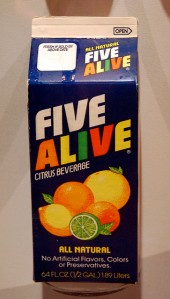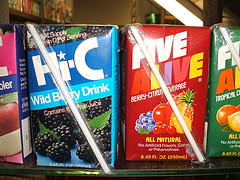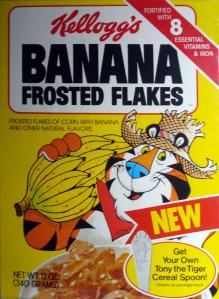Juicy Details
If you’re anything like me then it doesn’t take a whole lot to jog your memory and find yourself frozen on a familiar street, in a store, or with an old friend, reminiscing over some vague image from childhood suddenly stuck in your amygdala. Without notice, products, people, and places play out like scenes from what ought to be a “classic” film you remember from youth. Except this is your movie. And it’s boring. Because it’s just a carton of juice. Bruce Willis isn’t shooting anyone. (If he did, your thoughts are actually Post-Traumatic Stress, and you should seek help. See previous post.)
Getting back to the innocuousness of juice, every so often – out of nowhere – I find myself thinking of Five Alive. For those unfamiliar with the beverage, Five Alive is a citrus juice drink created by the Coca-Cola brand, Minute Maid. The “Five” represents the five fruit flavors in the drink. There has been a total of seven varieties, but the original was a blend of orange, lemon, grapefruit, tangerine, and lime. I have no idea what this combination tastes like; I’ve never had Five Alive. The memory I have of this product is entirely visual, etched into my psyche from a passing glance in a grocery store some 22 years ago.
Here it is in its simple, dated glory.
Minute Maid totes Five Alive as a “family” beverage that you can “enjoy all day long.” But for me, Five Alive was always a beverage other families enjoyed. That’s not to say it was better or worse than what my family drank (admittedly I started on coffee around three – which upon reflection is markedly worse). Yet despite my avoidance, this carton of what sounds like pure acid continues to wrest my imagination.
Perhaps it’s a lost association. If I didn’t drink Five Alive, who did? My aunt and her kids? My mother stocked the kitchen and fridge with what appealed to only her palate, and everyone in the house had to follow suit. Visiting friends and family always led to something of a discovery as a kid, opening their fridges and learning what variations in grocery choices existed outside of mine. But I don’t recall seeing Five Alive in any refrigerator. Or seeing anyone swig from a bottle of it on a hot summer day.
Maybe it’s just the carton itself. After all, a line of big royal blue boxes uniformly resting in the refrigerator aisle, eye-level with a sprouting eight-year-old, is rather mouthwatering (look at the Hi-C juice box above; I feel like I just licked a salt mine). Is Five Alive’s indelible legacy a result of nothing more than great product design? Hey, good for Minute Maid, if so. It’s a great example of brand positioning beginning with effective packaging. The carton made Five Alive one of those somewhat obscure supermarket staples I always wanted to like, but never tried, similar to Underwood’s Deviled Ham, and that weird peanut butter and jelly that comes in one jar.*
While relatively popular in the U.K. today, Five Alive’s accessibility in the United States is limited. How it fell into reticence is anyone’s guess. Here’s a modern image of the drink.
I’m not sure why it’s on fire here – maybe this is how it feels when you pour it over a paper cut. Regardless, that old blue carton continues to stand out in visions of antiquity. Perhaps it persists in my thoughts as a combination: part mystery, part visual beauty, part lure toward emotional introspection – it’s more than revved my historical engine while I have been writing, and I’m reminded of another juice drink from childhood.
What ever happened to Veryfine (I know; Sunny Delight owns the brand now)? I loved the old glass bottles you could once get. I also loved Veryfine because it lent itself so well to the self-aware cheesiness of pickup lines… think about it.
For the record, every drink tastes better out of glass.
*Smuckers makes a product called “Goobers” that blends peanut butter and jelly. I can’t recall if this is the exact product I remember from the 80s.








